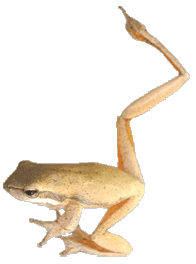What is Prototaxites?
 Michael Anissimov
Michael Anissimov
Prototaxites (pro-tow-TAX-i-tees) is a giant cylindrical fungus that dominated the landscapes of the late Silurian and the first half of the Devonian Period, living 420 to 370 million years ago. Prototaxites grew up to 8 m (26 ft) in height, with a diameter of up to 1 m (3.2 ft). The first research on Prototaxites was published in 1859 by Canadian scientist John William Dawson, using specimens found along the shores of Gaspé Bay in Quebec, Canada as a basis. His initial interpretation was that the organism was an early conifer being rotted by a fungus, beginning a century-and-a-half debate on the nature of the organism that was only resolved in 2007.
In the early period of its dominance, Prototaxites would have been the only organism on land over a couple feet in height, as vascular plants were just starting out, and had not yet evolved true wood or leaves. It would have been spooky to view the late Silurian landscape, with nothing but a series of tall fungal monoliths towering over short plants harboring the first land animals — tiny arthropods, worms, and millipedes. This world was very different than that of today.

The fossil is a tall cylinder composed of interwoven tubes just 50 microns (millionths of a meter, or thousandths of a millimeter) in diameter. Lack of obvious vascular tissue ruled it out as a plant, but there was great debate about what exactly it was. Any proposal sounded crazy — how could a fungus, lichen, or algae be 26 ft tall? We still don't know, but a complete absence of large herbivores and a lack of competition from plants must have helped. Some have proposed that it was to spread its spores more easily, but fungi only a couple inches tall, such as mushrooms, seem to have no trouble spreading their spores.
Lacking the ability to photosynthesize, Prototaxites must have gotten its nutrients from extending its feeding tubes (hyphae) onto the surrounding ground. It is thought to have consumed cryptobiotic soil (also called biocrust), soil that contains bacteria, lichens, mosses, and other fungi. Today, cryptobiotic soil is only found in deserts, but during the Silurian and Devonian, it would have been much more common, providing ample food for this humongous fungus.
Some paleontologists consider Prototaxites to be among the strangest organisms that ever lived. It certainly displays the apex of fungi evolution before plants and animals took over the land.
AS FEATURED ON:
AS FEATURED ON:











Discuss this Article
Post your comments